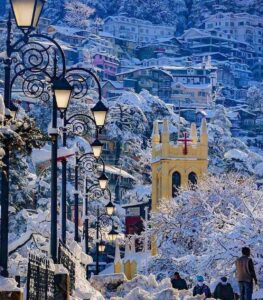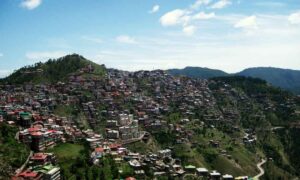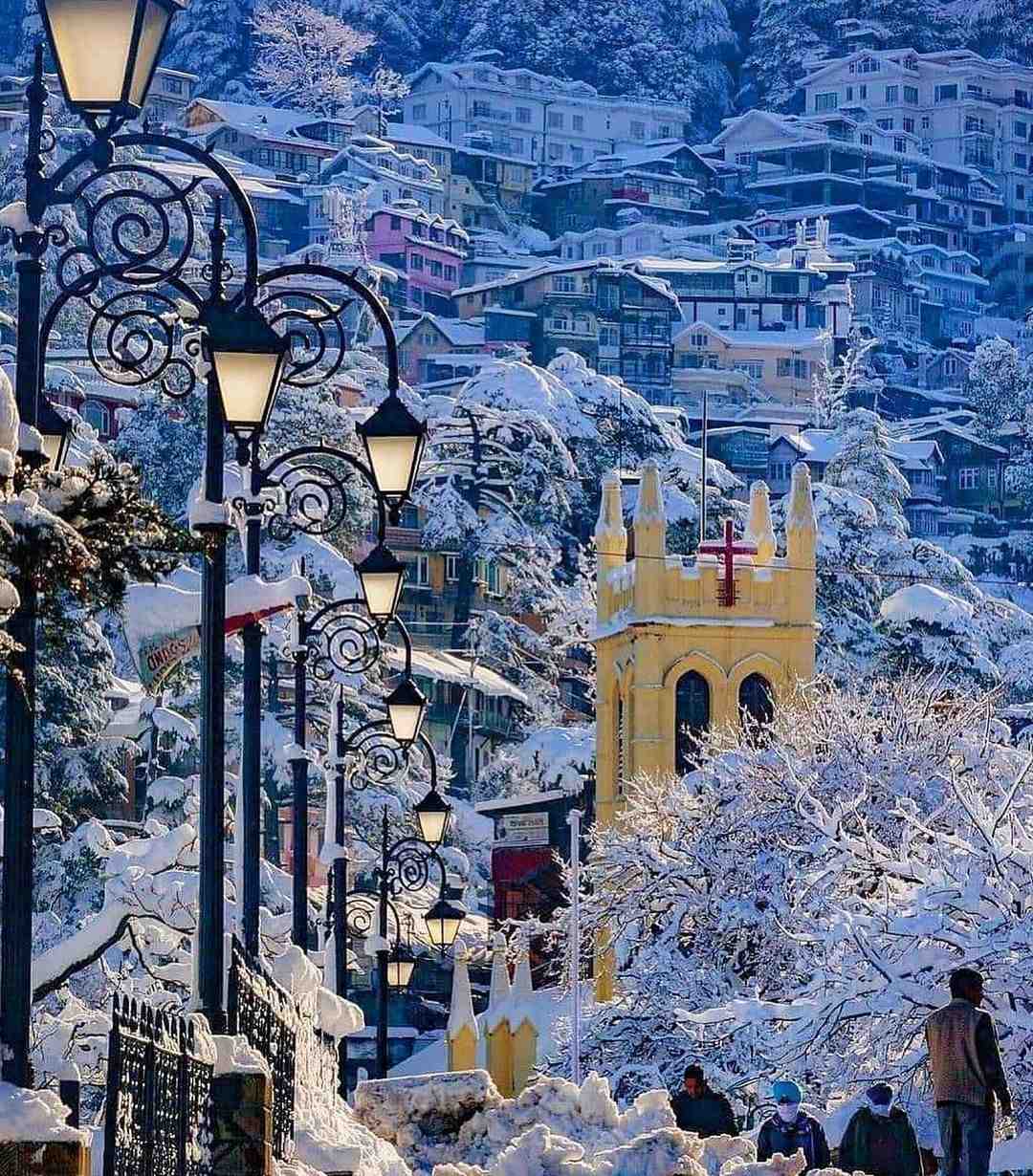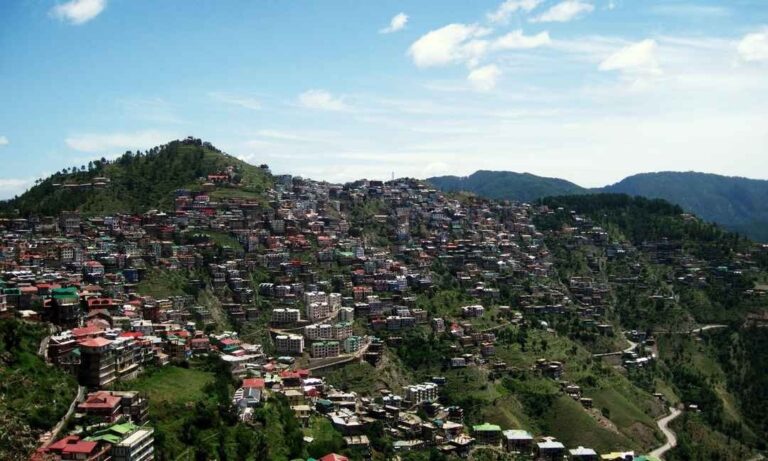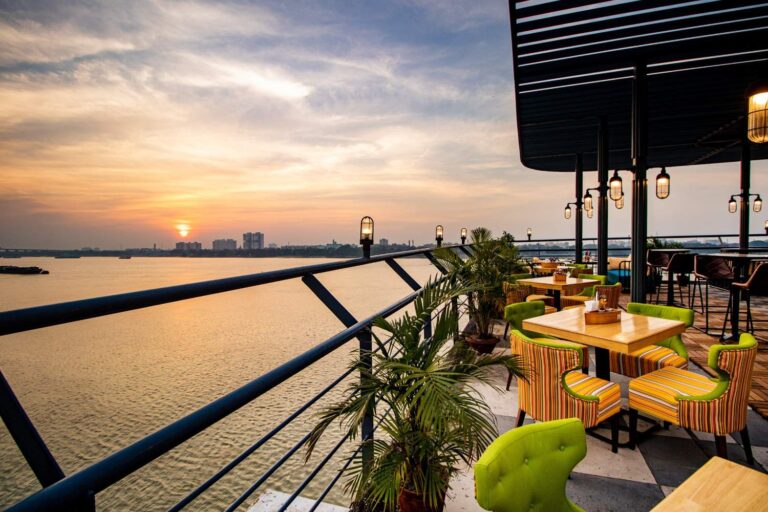Introduction
In the heart of Shimla, the “Queen of Hills,” lies an open expanse that has witnessed history, culture, and the everyday rhythm of life for centuries—the Ridge. If Shimla is a painting, then the Ridge is its canvas. It is where grand colonial architecture meets sweeping Himalayan views, where festivals and political gatherings converge, and where past and present find a common ground.
For locals, the Ridge is not just a tourist spot—it is Shimla’s living heartbeat. For travelers, it offers a panoramic introduction to the city, standing as a reminder of its colonial roots, cultural heritage, and continuing evolution.
This blog dives deep into the history, heritage, and modern charm of the Ridge, exploring its transformation from a colonial promenade to a cultural hub and tourist magnet.
Geographic & Cultural Setting of The Ridge
The Heart of Shimla’s Topography
The Ridge is a broad, open platform stretching east to west in central Shimla. Unlike the winding, steep, and often narrow roads of the hill station, the Ridge is flat and expansive. This unusual layout makes it stand out geographically, acting as a natural gathering space.
- North View: The snow-draped Shivalik ranges.

- South View: Deep valleys and forests stretching toward the plains.
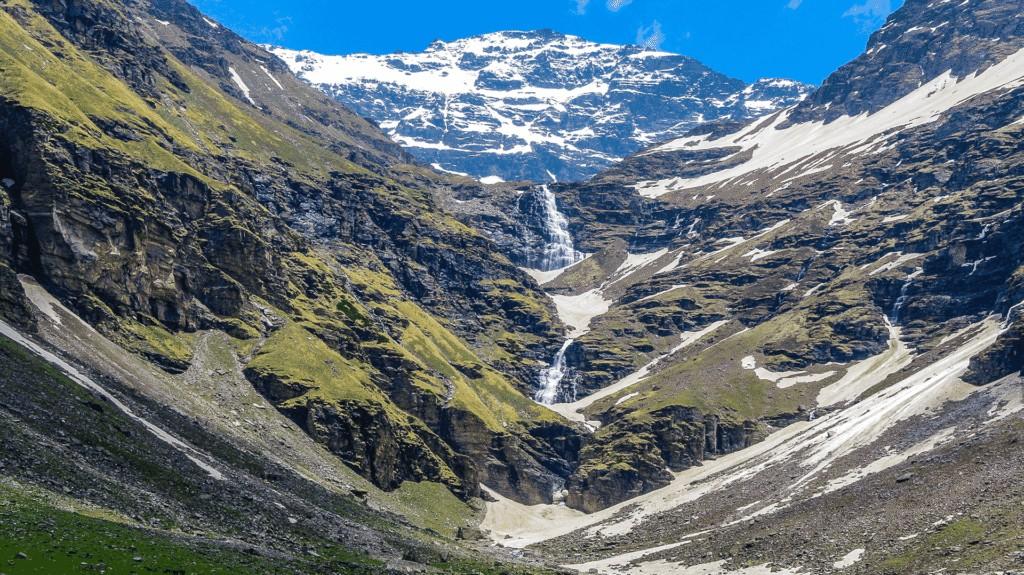
- East & West: Connections to Mall Road, Christ Church, Jakhoo Hill, and Lakkar Bazaar.
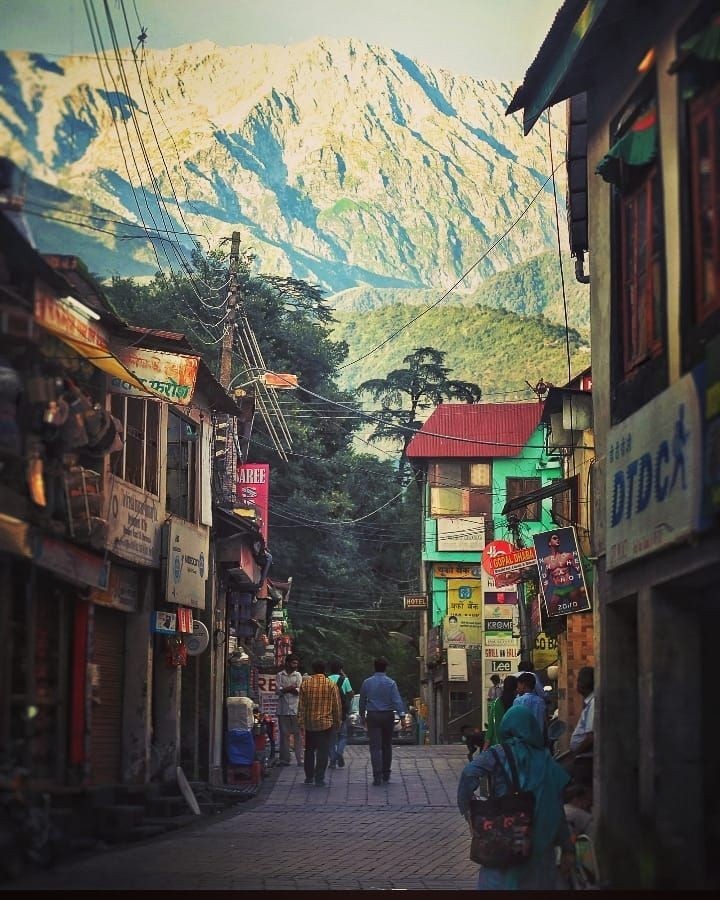
From this single spot, one can see the fusion of natural grandeur and human architecture, a characteristic that has made it central to Shimla’s identity.
Cultural Role in the City
Over time, the Ridge became more than just geography:
- A promenade for leisure during colonial times.
- A hub for cultural festivals, including the Summer Festival and folk performances.
- A civic ground for speeches, protests, and official ceremonies.
- A tourist attraction, drawing visitors with its open-air charm and iconic landmarks.
Origins of The Ridge
Before the British
Before Shimla became a colonial summer capital, the hill was a quiet forested area, dotted with small villages. The ridge-like plateau was largely unused, save for grazing and pathways. Local communities, primarily belonging to the Pahari culture, considered the surrounding hills sacred, especially Jakhoo Hill with its temple dedicated to Lord Hanuman.
Arrival of the British
In the early 19th century, after the Anglo-Gurkha wars, Shimla came under British control. Its pleasant summer climate made it a natural choice for respite from the Indian plains. By 1864, Shimla was declared the summer capital of British India.
The Ridge, centrally located and open, became the perfect social promenade—a place where British officers and their families could stroll, socialize, and enjoy the Himalayan views. Its development marked the beginning of Shimla’s transformation into a cosmopolitan hub.
The Ridge During the Colonial Era
A Social & Political Promenade
By the mid-19th century, the Ridge had become the center of British social life. In the evenings, it was crowded with colonial officers in formal attire, exchanging greetings and news. Events such as band performances and parades were regularly held here.
The Ridge was not just about leisure—it was also a space of power and politics. Since it lay close to the Viceregal Lodge (now Indian Institute of Advanced Study), it often hosted official parades and announcements.
Development of Landmarks
- Christ Church (1857): The iconic neo-Gothic structure was built on the Ridge, becoming a symbol of Shimla’s colonial heritage.
- Statues and Memorials: The British erected monuments to mark important figures and events.
- Gaiety Theatre (1887, nearby Mall Road): Though not on the Ridge itself, its presence nearby added cultural depth.
Cultural Symbol of Empire
For the British, the Ridge symbolized their ability to recreate a “slice of England” in India. Its wide streets, Gothic church, and evening promenades echoed the cultural life of Europe.
Architectural Landmarks on The Ridge
Christ Church, Shimla
Built in 1857, Christ Church is the second-oldest church in North India. Designed in the neo-Gothic style, its stained-glass windows represent faith, hope, charity, and other virtues. It remains a centerpiece of the Ridge, glowing golden under evening lights.
Statues and Monuments
The Ridge hosts several statues of national leaders:
- Mahatma Gandhi – A reminder of India’s freedom struggle.
- Indira Gandhi – India’s first woman Prime Minister.
- Dr. Y.S. Parmar – The first Chief Minister of Himachal Pradesh.
These statues symbolize the continuity of history—from colonial rulers to independent India’s leaders.
The Bandstand & Gaiety Theatre
Though the Gaiety Theatre is on Mall Road, its cultural influence spills onto the Ridge. The open bandstand once echoed with British military bands and today resonates with folk performances during festivals.
The Ridge in India’s Freedom Struggle
Political Movements
As Shimla became the administrative capital during summers, the Ridge naturally turned into a site of political discourse. Leaders often gathered here to protest colonial policies or demand reforms.
Independence Era Memories
Although most high-level negotiations (like the Shimla Conference of 1945) took place in the Viceregal Lodge, the Ridge was the public platform where ordinary citizens voiced their aspirations for freedom.
Post-Independence Transformations
Growth of a Civic Space
After 1947, the Ridge continued as Shimla’s civic heart. Statues of Indian leaders replaced colonial symbols, and it became a stage for Republic Day and Independence Day celebrations.
Urban Development
As Shimla grew into the capital of Himachal Pradesh (1971), the Ridge was modernized with stronger pavements, lighting, and improved connectivity. Underneath the Ridge lies a crucial water reservoir, supplying the town with drinking water since the colonial era.
The Ridge in Popular Culture & Tourism
Tourism Magnet
Today, no visit to Shimla is complete without a walk on the Ridge. Tourists gather to photograph the church, enjoy horse rides, or sip tea while soaking in the Himalayan view.
Summer Festival
Held every June, the Shimla Summer Festival on the Ridge celebrates music, folk dance, and crafts. It draws performers from across India and is one of the city’s largest cultural events.
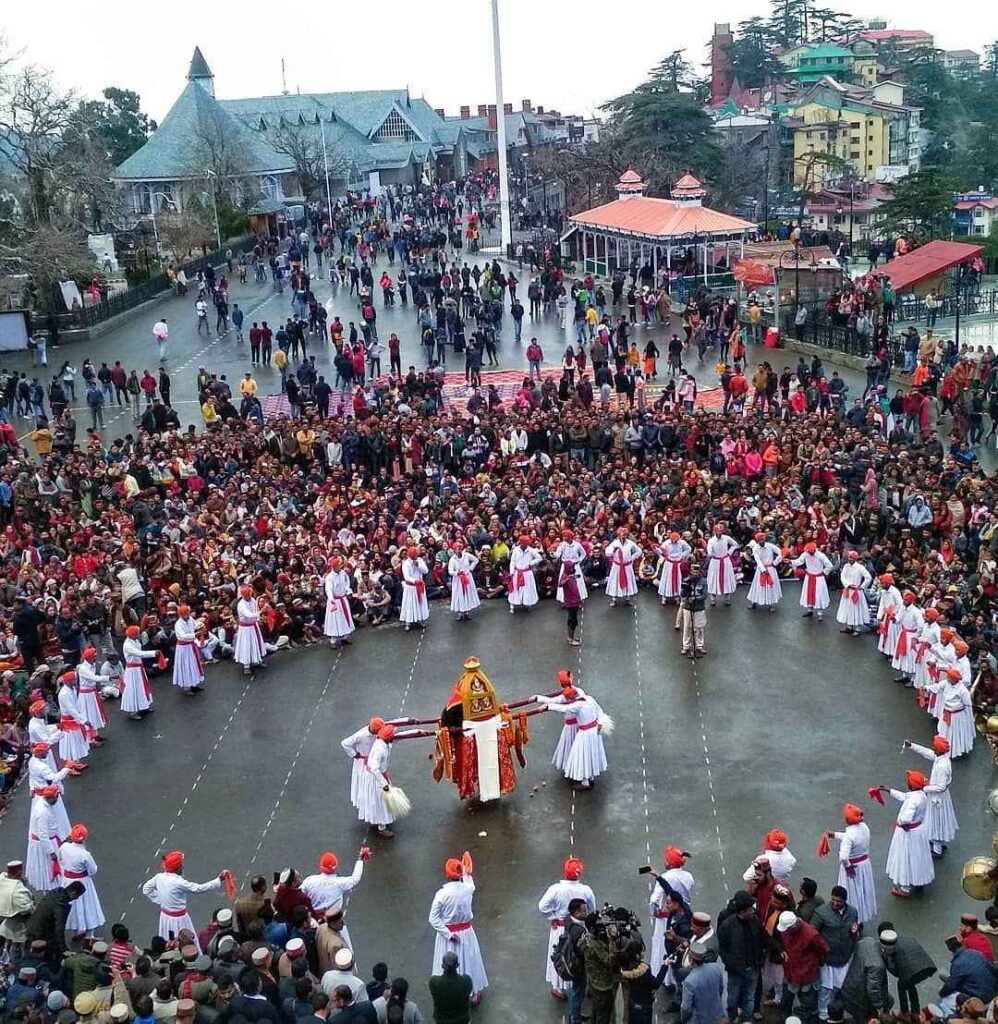
In Bollywood & Media
The Ridge and Christ Church have featured in multiple films, television shows, and documentaries, further embedding them into India’s cultural memory.
Natural Disasters & Restoration Efforts
Earthquakes and Landslides
- The 1905 Kangra earthquake caused structural damage in Shimla, including around the Ridge.
- Over time, landslides and water seepage threatened the foundation, given the reservoir beneath.
Conservation Projects
The Shimla Municipal Corporation and Archaeological Survey of India have undertaken projects to strengthen the Ridge, ensuring its preservation while balancing urban growth.
The Ridge Today – A Blend of Heritage & Modern Life
The Ridge is alive every day—with locals walking in the mornings, tourists crowding in the afternoons, and cultural performances lighting it up in the evenings. It is:
- A heritage site preserving Shimla’s colonial past.
- A civic ground for events, protests, and ceremonies.
- A tourism hub, drawing thousands daily.
It remains, quite literally, the living room of Shimla.
Future of The Ridge
As Shimla faces challenges of urban pressure, tourism growth, and climate change, the Ridge stands at a crossroads. Efforts are underway to:
- Preserve heritage architecture like Christ Church.
- Maintain sustainability by protecting underground water tanks.
- Balance tourism with conservation to ensure the Ridge remains safe for generations.
Conclusion
The Ridge is not merely a location—it is Shimla’s heartbeat. From colonial promenades to freedom protests, from devastating earthquakes to vibrant festivals, it has seen history in motion. Today, as a heritage landmark and tourist hub, it continues to bind Shimla’s identity together.
Whether you’re a local pausing for evening chatter, a traveler marveling at the Himalayan skyline, or a historian tracing colonial footprints, the Ridge welcomes all. It is, and will remain, Shimla’s historic heartbeat and enduring attraction.

